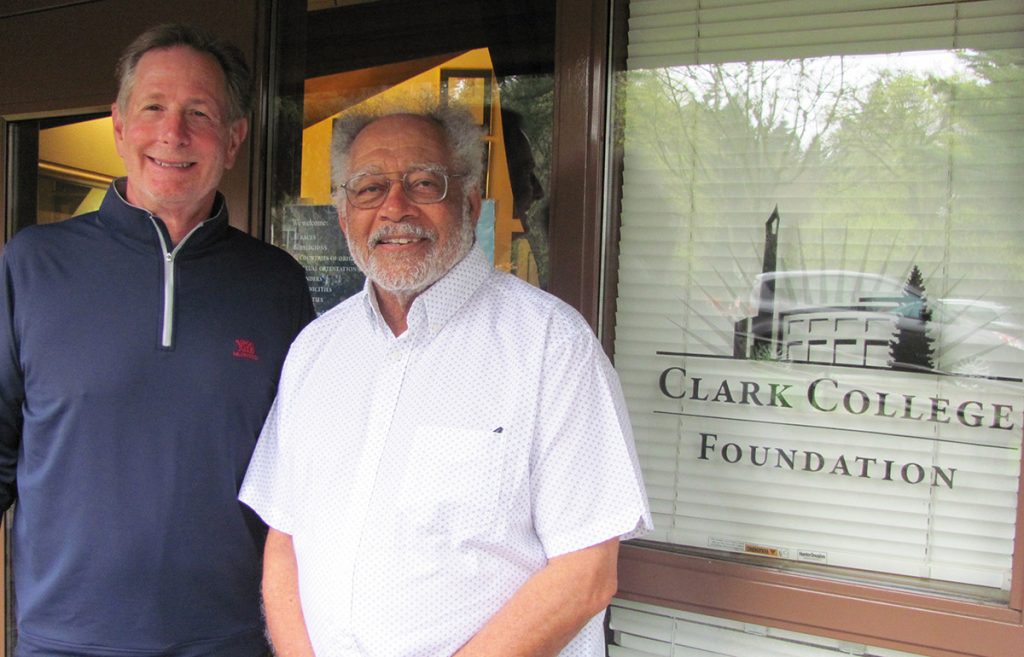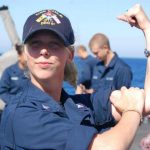Retired jet propulsion scientist joins board
Sanford Jones, a retired jet propulsion scientist who currently runs a property management business, joined Clark College Foundation’s Board of Directors.

Sanford Jones, right, is welcomed to Clark College Foundation’s board by Eric Merrill, incoming board chair.
Jones, 79, a former Camas resident now living in Arizona, has a special interest for all things culinary and wine. He and his wife, Carol Ewing, started a charity—the Wine and Food Society of Clark County.
“I collect wines and Scotch and Carol and I like good food. So I founded the Wine and Food Society with business partner Dan Foster in 2006,” said Jones of the nonprofit that promotes wine and cuisine education and research in the region. The couple also own businesses in the Northwest.
It was through this charity that Jones connected—and became a major financial contributor—to Clark College. The couple set up a charitable remainder trust with Clark College Foundation that will be funded over time from the sale of their real estate.
Jones believes a charitable remainder trust provides empowerment through education, giving others opportunities for success like he and Ewing have had in their lives. Given the couple’s interest in food and wine, they are particularly enamored with Clark’s Cuisine and Professional Baking programs.
“We like to support local enterprises and Clark is a local institution. It is the best opportunity for increasing the number and quality of culinary students in Clark County.”
Now as a member of the foundation’s board, Jones will be in a position to offer his business expertise to Clark College Foundation, a 46-year-old nonprofit that serves as the fundraising partner of Clark College.
In his professional career, Jones worked at NASA’s Lewis Research Center in Cleveland researching electric propulsions and building a tiny engine that turns a spacecraft. The work in Cleveland then led him to the Jet Propulsion Laboratory in Pasadena, Calif.
His work has a connection to the 1986 Space Shuttle Challenger. He oversaw the construction of an orbiter for the spacecraft Galileo in the 1980s. Orbiters are robotic crafts that explore outer space. Jones’ orbiter was contained within the Space Shuttle Atlantis, which was parked at the Kennedy Space Center’s launch pad in Florida undergoing final preparations. Then on January 28, 1986, the Challenger exploded shortly after taking off. The disaster immediately shut down the shuttle program, sidelining Jones’ orbiter.
“I heard about the explosion first when I was in a meeting and then watched the aftermath on television,” said Jones, who at that time had moved to another job. “There were a lot of changes that had to be made for years and it was a long time before the space shuttle got to launch again.”
Read the full story about Jones.



